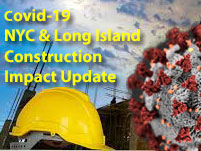Have you as a commercial real estate tenant approached your potential or current landlord disputing the size of your premises?
There as probably as many different ways landlords have been measuring their leased facilities as there are individual imaginations of those involved. There are no laws requiring utilization of building area measurement standards or inclusion of square footage numbers in the lease. Such measurement standards are only suggested guidelines. And correctly interpreting BOMA (Building Owners and Managers Association) methodologies for determining area is not for the faint of heart; these complex calculations need to be undertaken by a trained professional — preferably a neutral third party, with no interest in the lease.
A few examples of measurement methods landlords use:
? BOMA method of measuring. Many have no idea what that actually means.
? Exterior window line to the center of the interior demising walls.
? Drip line method to achieve the outside measurement line.
? Using what their 3rd party agency told them or provided to them in a sales package.
? Some landlords have been known to basically throw a dart at the floor plan and use a eyeball measurement.
? Smart landlords might go to the extra expense of having a space planner or architect to actually measure the entire building and the interior demised spaces to see what has actually been built.
How “sophisticated” are your current calculations? Has the landlord actually represented that they are based upon BOMA or some other recognized industry standard? Have you as the tenant conducted your own preliminary calculations which reveal the potential for a significant variance with the existing numbers? Is the effort worth the potential savings in base rent over the term of the lease?
Even when a floor plan is included in a lease agreement, there is no clear definition of whether both useable square footage and rentable square footage numbers should be included on the diagram. Or for that matter, is the floor plan an actual to-scale drawing or only a representation of the premises? If only a representation is being used in the lease document, is a separate full-scale drawing of the subject premise available to all parties?
Not every landlord gets a complete set of blue prints of the as-built building and tenant improvements when the building is sold. In today’s economic world, the building could have been foreclosed on, and no space plan documents were transferred. New owners may have no idea what the exact measurements are of the building and its related to as-built tenant improvements.
The word “approximate” is also sometimes used when documenting the size of existing premises. “Approximate” may be defined as – inexact, or as something close enough to be effectively useful. The term “approximately” could mean within a few square feet, or it could be off by +/- 10% to 25% of the total represented amount.
The less sophisticated the CRE tenant, the more likely a landlord can embellish the actual square footage numbers. Sometimes this is not done intentionally, but it more likely happens because a landlord relied on someone else’s information, who in turn relied on someone else’s information.
Here are examples of two deals:
Landlord X represented by Broker Y may say the space is 10,000 RSF and never discloses what the USF is; Tenant W may not be represented by anyone and readily accepts the landlord representations, even though Tenant W may have the option to perform his own space measurement. Hand shake between the parties and the deal is done.
Another more sophisticated Tenant Z represented by Consultant S may question the square footage numbers and based on their own professional measurements determine the USF is actually 8,500 sf with a building common area factor of 12% resulting in a space 9,520 RSF. Hand shake between the parties and the deal is done.
There is always the chance that, by challenging the landlord’s assertion of area, a tenant could be opening a can of worms — and actually end up paying more base rent in the event the verified calculations turn out to be greater than anticipated. Tenants should take the square footage information provided to them by landlords and have independent professionals confirm or verify the quoted numbers to their satisfaction – BEFORE – they sign a lease agreement.
You can overcome this issue by including a clause in the offer to lease saying the space will be surveyed and rent will decrease if found to be less BUT if area increases then maximum increase in rent will be limited to 2%. When Landlord objects, the simple response is 1) what have you got to worry about ? 2) well let’s get it surveyed before we go any further then.
Perhaps the tenant’s best approach would be to include a lease provision (starting as a deal point negotiated into the LOI) that the landlord and tenant will verify — and mutually agree upon — the area calculations as a condition precedent to executing the lease.
Poor communication between the landlord and CRE tenant is the leading cause of significant errors or misunderstandings in how leased space measurements are calculated. It really does not matter “how” the leased space is measured, using any available measurement standard, so long as how the process was derived is fully disclosed and agreed upon by both parties.
Discover more from Helping NYC & Long Island Commercial Tenants, Owners, and Developers
Subscribe to get the latest posts sent to your email.






The more things change, the more they remain the same. They will always need to know the value of real estate, and they will always hire good, experienced appraisers to express their opinions. Our task is to be there when and where they need us.